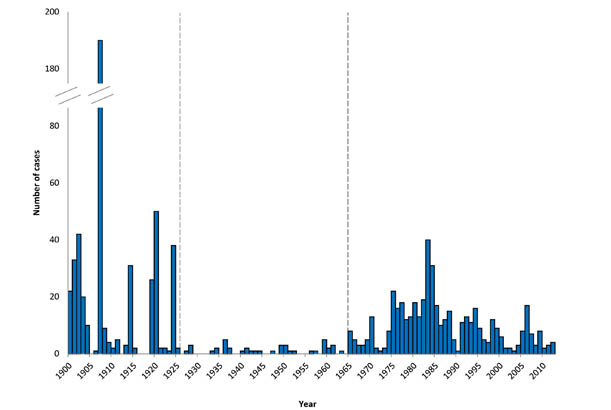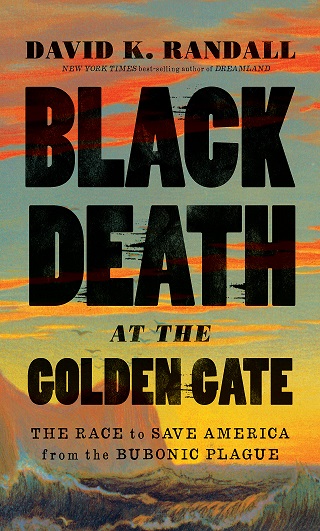
By Louis Chan, AsAmNews National Correspondent
Wong Chut King became the first documented case of the plague in the continental United States in 1900. He died in San Francisco’s Chinatown after a fierce attack of vomiting, diarrhea and delusions.
In his new book, Black Death at the Golden Gate, David Randall documents the cover up that followed King’s death and the role racism played in allowing the disease to spread.
“Racism was a key part in the slow response to the epidemic, and played a crucial role in putting the lives of millions of people at risk,” Randall said to AsAmNews. “There was a mistaken belief that plague was only an “Asian disease” that preyed upon those who ate rice instead of a more “muscular” diet of meat. While it sounds ridiculous now, this notion was common even among the elite of the U.S. medical profession, who were convinced that those with European ancestry had somehow inherited immunity to the disease. It was only after the first plague victims were discovered outside of the confines of Chinatown that city and state officials began to take the threat of plague seriously.”
Just the word plague sent fear up the spines of leaders both in and outside of Chinatown. In the 14th century, the plague killed 1 out of three people in Europe. The epidemic became known as the Black Death.
In 1900, there were over 20 cases of the plague in the United States, according to the Center for Disease Control. Most of those in Chinatown That doubled within two years and spiked to just under 200 by 1907.

Health authorities did not dare want to announce that San Francisco faced an outbreak. By doing so, they would risk losing their jobs. California’s economy depended on the illusion that the Golden State was a “mythical place,” according to Randall.
“The city and state’s economy was built on the prospect of more people emigrating from the eastern states, and it was a matter of civic pride to publicize the latest population numbers. To confirm their fears of what would happen if the plague truly did overtake the city, all Californians had to do was to look to Hong Kong, which saw its population and economy decimated by the outbreak. Californians decided that they could live in denial as long as their secret did not get out, and continued to appeal for tourists and newcomers even as they knew that plague could be spreading,” Randall said.
It was in 1899 that Yuk Hoy died of the plague in Honolulu. He had just arrived from China weeks earlier. Within five days six more people died of the plague. All of the victims were Chinese men. A five day quarantine of Chinatown was ordered. Armed guards were placed at the borders to make sure no one left and the disease did not spread beyond the Chinese.
It didn’t work. More deaths were reported, including that of a German teenager. Desperate, local firemen set fire to Honolulu’s Chinatown-wiping it out.
It was against this backdrop, that the Chinese Six Company in San Francisco became co-conspirators in the cover up of the disease.
The Chinese Six Company was put in the awkward position of trying to protect the residents of Chinatown from the disease while at the same time trying to fight city officials who planned to use the rumors of plague as an excuse to raze the neighborhood. Their fear was that the city would decide to burn Chinatown to the ground, as officials in Honolulu had done to that city’s Chinatown after a plague outbreak in early 1900. At the same time, the Chinese Six Company did not want to admit that plague was present in Chinatown because it seemed to confirm all of the worst stereotypes about the neighborhood and its inhabitants: that it was a filthy, unhygienic place that was prone to disease. The leaders of the Chinese community found a common ground with city and state officials who wanted to deny the existence of plague because the reality threatened their livelihoods.
-David Randall to AsAmNews.

The media also joined the conspiracy. Randall tells AsAmNews that the San Francisco Chronicle and San Francisco Call had extensive interest in California retail and real estate. The plague would jeopardize their investments. The papers refused to acknowledge the existence of the plague.
So what saved Chinatown and the rest of the Golden State. Randall documents how one doctor forged trust within the Chinese community and worked to stop the disease in its tracks.
Black Death at the Golden Gate is published by W.W. Norton and Company
AsAmNews has Asian America in its heart. We’re an all-volunteer effort of dedicated staff and interns. Check out our Twitter feed and Facebook page for more content. Please consider interning, joining our staff or submitting a story



